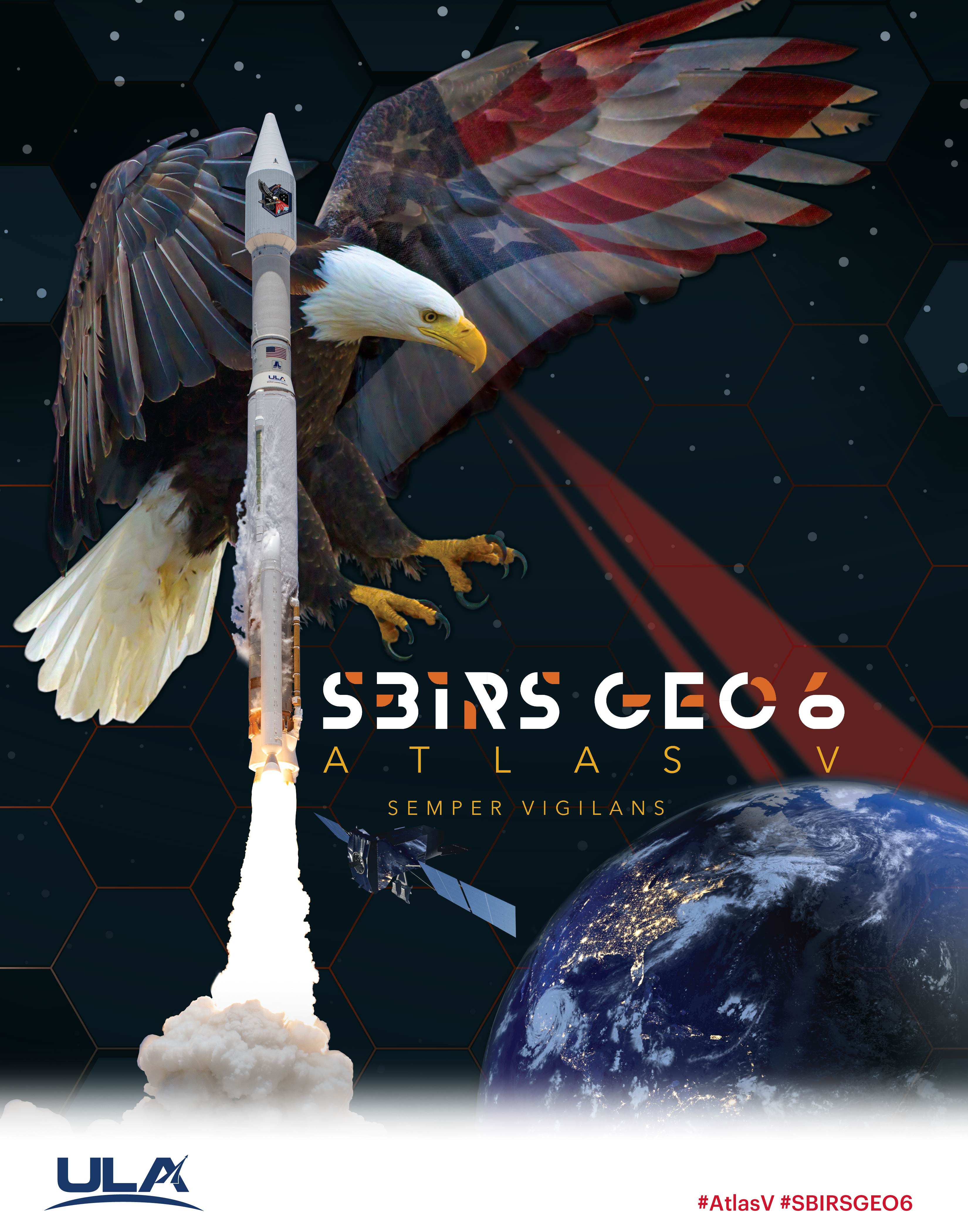Atlas V Successfully Launches SBIRS GEO 6
A United Launch Alliance (ULA) Atlas V 421 rocket will launch the sixth and final Space Based Infrared System Geosynchronous Earth Orbit (SBIRS GEO 6) spacecraft for the U.S. Space Force's Space Systems Command (SSC).
Launch Date and Time: Thurs., Aug. 4, 2022 at 6:29 a.m. EDT (1029 UTC).
Go Atlas! Go Centaur! Go SBIRS!
Launch Webcast
Live updates
To keep up to speed with updates to the launch countdown, dial the ULA launch hotline at 1-877-852-4321.
Join the conversation at Twitter, Facebook, Instagram and
LinkedIn
#AtlasV #SBIRS #SBIRSGEO6
Mission Overview
A United Launch Alliance (ULA) Atlas V 421 rocket is launching the sixth Space Based Infrared System Geosynchronous Earth Orbit (SBIRS GEO 6) missile detection and early warning satellite for the U.S. Space Force’s Space Systems Command (SSC). ULA’s Atlas V rocket will launch SBIRS GEO 6 into a performance optimized geosynchronous transfer orbit (GTO). Liftoff will occur from Space Launch Complex-41 at Cape Canaveral Space Force Station, Florida.
Equipped with powerful scanning and staring infrared surveillance sensors to protect our nation 24/7, the SBIRS spacecraft continue to serve as the tip of the spear for global missile warning as ballistic missile threats proliferate around the world. These infrared sensors, and others in a constellation of persistent overhead satellites, collect data that allow the U.S. military to detect missile launches, support ballistic missile defense, expand technical intelligence gathering and bolster situational awareness on the battlefield.
Built by Lockheed Martin using its modernized LM 2100 Combat Bus™, SBIRS GEO 6 is an enhanced space vehicle providing even greater resiliency and cyber-hardening against growing threats, as well as improved spacecraft power, propulsion and electronics.
Launch Vehicle
Payload Fairing (PLF)
The spacecraft is encapsulated in the 14-ft (4-m) diameter extra extended payload fairing (XEPF). The XEPF is a bisector (two-piece shell) fairing consisting of aluminum skin/stringer construction with vertical split-line longerons. The vehicle’s height with the XEPF is approximately 194 ft (59.1 m).
Centaur
The Centaur second stage is 10 ft (3 m) in diameter and 41.5 ft (12.6 m) in length. Its propellant tanks are pressure-stabilized and constructed of corrosion-resistant stainless steel. Centaur is a cryogenic vehicle, fueled with liquid hydrogen and liquid oxygen, powered by an RL10C-1-1 engine producing 23,825 lbs (106 kilo-Newtons) of thrust. The cryogenic tanks are insulated with a combination of helium-purged blankets, radiation shields and spray-on foam insulation (SOFI). The Centaur forward adapter (CFA) provides structural mountings for the fault-tolerant avionics system and structural and electrical interfaces with the spacecraft.
Booster
The booster is 12.5 ft (3.8 m) in diameter and 106.5 ft (32.5 m) in length. The booster’s tanks are structurally rigid and constructed of isogrid aluminum barrels, spun-formed aluminum domes and intertank skirts. Booster propulsion is provided by the RD-180 engine system (a single engine with two thrust chambers). The RD-180 burns RP-1 (Rocket Propellant-1 or highly purified kerosene) and liquid oxygen and delivers 860,200 lbs (3.83 mega-Newtons) of thrust at sea level. Two solid rocket boosters (SRBs) generate the additional power required at liftoff, with each providing 371,550 lbs (1.6 mega-Newtons) of thrust. The Centaur avionics system, provides guidance, flight control and vehicle sequencing functions during the booster and Centaur phases of flight.
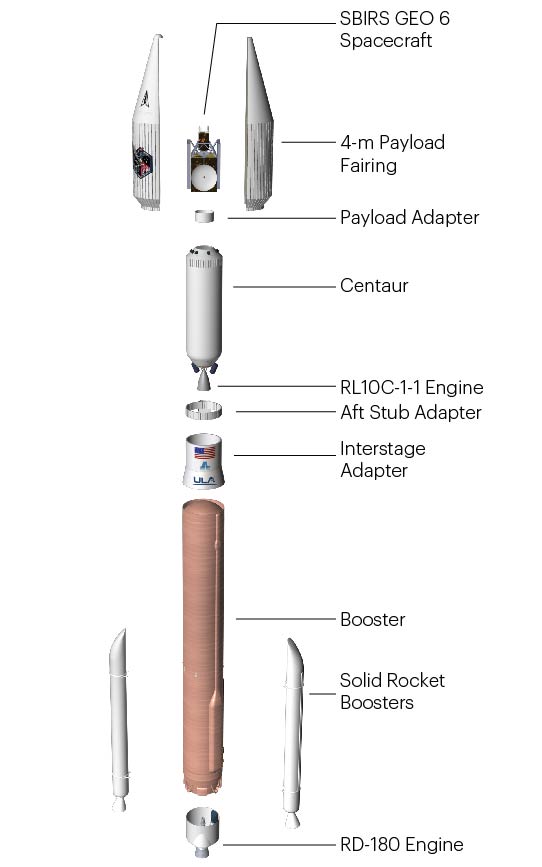
Flight Profile
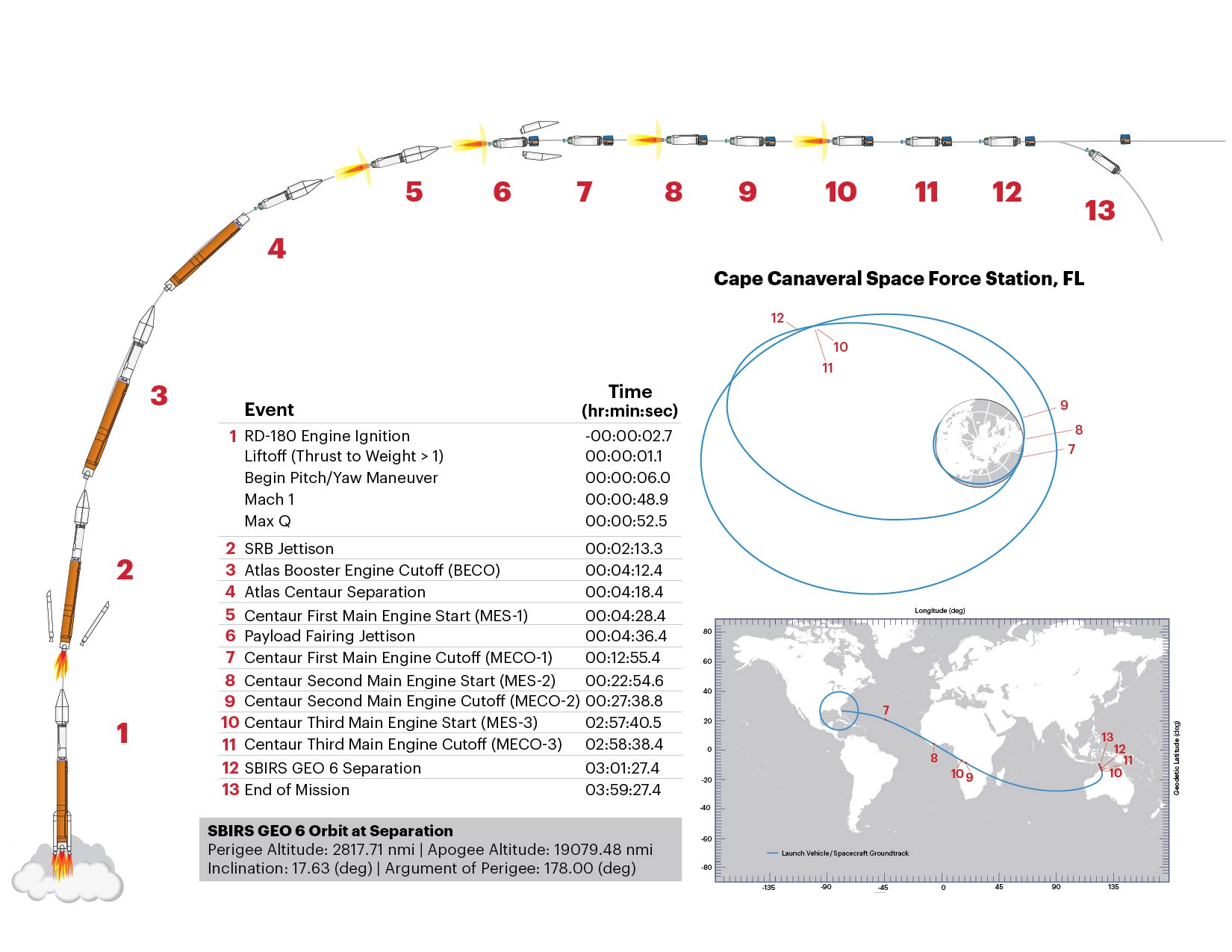
Space Launch Complex-41 // Processing
Space Launch Complex-41, the East Coast home of the Atlas V rocket at Cape Canaveral Space Force Station in Florida, employs a “clean pad” concept of operations to ready launch vehicles and payloads for ascent into space. The rocket elements are assembled atop a Mobile Launch Platform inside the Vertical Integration Facility (VIF) located adjacent to the launch pad. The platform and fully stacked Atlas V then travel by rail approximately 1,800 feet northward from the VIF to the pad for the final countdown, fueling and liftoff. Complex 41 was constructed by the U.S. Air Force in the 1960s for the Titan rocket program. The site was rejuvenated in support of the Atlas V starting in the late 1990s.
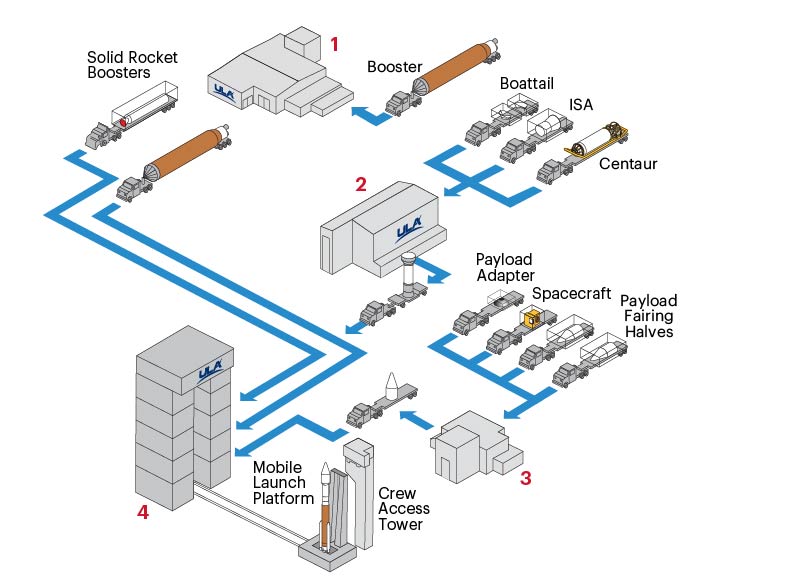
1. Atlas Spaceflight Operations Center (ASOC)
Launch Control Center
Mission Director’s Center,
Mission Support
Teams,
Launch Vehicle Horizontal Processing &
Ordnance Installation
2. Delta Operations Center
ISA, Centaur, Boattail & Vertical Integration Deck
3. Spaceflight Processing Facility
Spacecraft Processing,
Testing & Encapsulation
4. Vertical Integration Facility
Launch
Vehicle Integration &
Testing, Spacecraft Mate &
Integrated Operations
Production
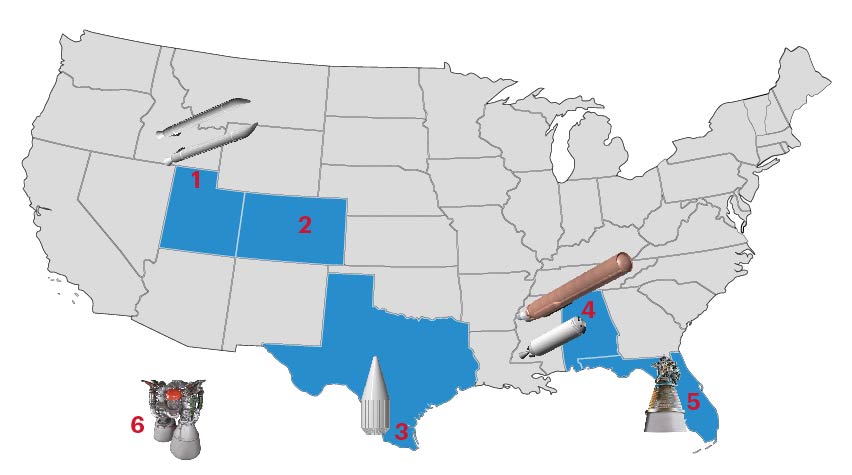
1. Promontory, UT
Solid Rocket Booster Fabrication
at Northrop Grumman
2. Denver, CO
ULA Headquarters &
Design Center Engineering
3. Harlingen, TX
Payload Fairing, Payload Fairing Adapter,
Booster Adapter &
Centaur Adapter Fabrication
4. Decatur, AL
Booster Fabrication & Final Assembly,
Centaur Tank Fabrication & Final Assembly
5. West Palm Beach, FL
RL10C-1-1 Engine Fabrication at
Aerojet Rocketdyne
6. Khimki, Russia
RD-180 Engine Fabrication at
NPO Energomash


